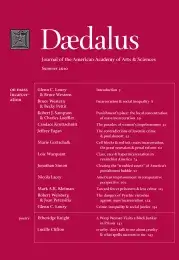Toward fewer prisoners & less crime
Mass incarceration can be approached from (at least) four perspectives: those of social science, cultural criticism, advocacy, and policy analysis.
The social scientist wants to know about causes and consequences, to employ theories to explain events such as the explosion of incarceration in America over the past generation, and to use events to develop new theories. The cultural critic strives to elucidate meanings, asking about the intentions behind the actions of participants in the social, administrative, and political processes that produce a given set of results; about how they justify those actions to themselves and others; and about the character of the social order that produced those processes and their results. The advocate searches for persuasive means to the end of ameliorating an already identified evil. The policy analyst tries to figure out what course of action would best serve the public interest, all things considered, trying to take into account unintended as well as intended consequences.
Viewed through a policy-analytic lens, “mass incarceration” looks like only a partial problem definition; the other part of the problem is crime. If the crime problem were trivial, or if incarceration had only a trivial effect on crime, the solution to the problem of mass incarceration would be trivially obvious: release those currently locked up and end the practice of sending offenders to jail or prison. The policy analyst’s work would then be complete, and the task of persuasion could then be turned over to the advocate, guided by the social scientist and the cultural critic.
But if crime is a real problem and if incarceration can be one means (among many) to control crime, then the situation looks more complicated. One would need to measure the harms done by crime as well as the harms done by incarceration, ask about the effects of alternative incarceration policies on the rates of different sorts of crime, and consider the likely results of making more use of other crime-control measures, including alternative forms of punishment, while reducing incarceration.
For example, it seems clear that increasing police activity can reduce victimization rates. Thus it ought to be possible in principle, given some target level of victimization, to “trade off” policing against incarceration: adding police while reducing imprisonment. Whether that tradeoff would be . . .
